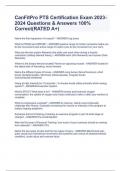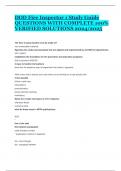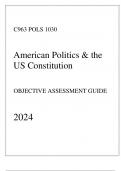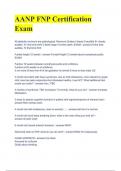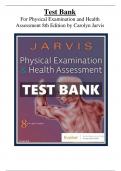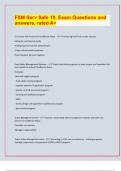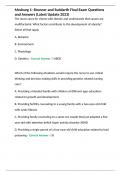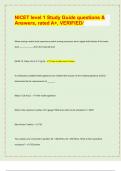Exam (elaborations)
WGU C963 Study Guide (Version 4) ( Latest 2024 / 2025 ) Actual Questions and Answers 100% Correct
- Course
- Institution
WGU C963 Study Guide (Version 4) ( Latest 2024 / 2025 ) Actual Questions and Answers 100% Correct 1. What was the Enlightenment Answer: Ideas centered around the value of human happiness. A period in Western European history following the Middle Ages. The source of our ideas about natural rig...
[Show more]




